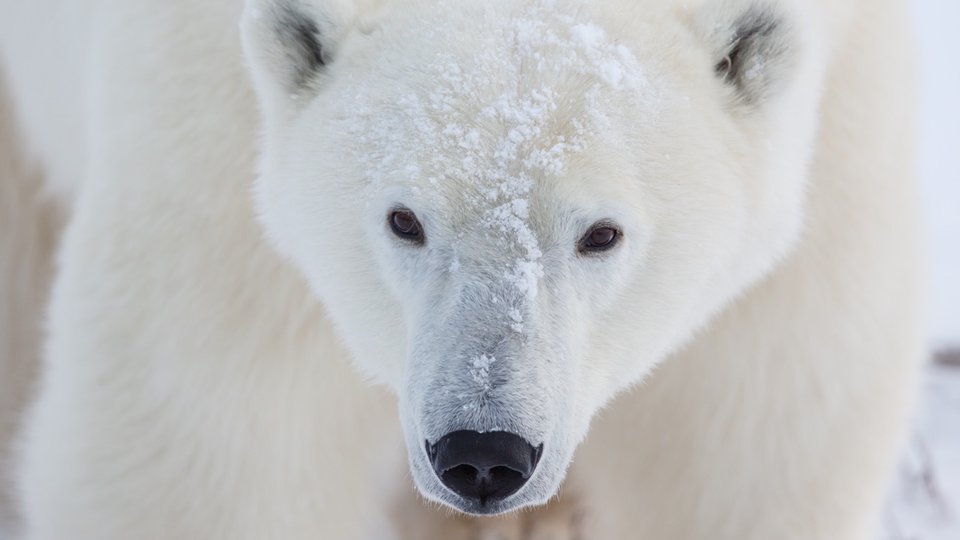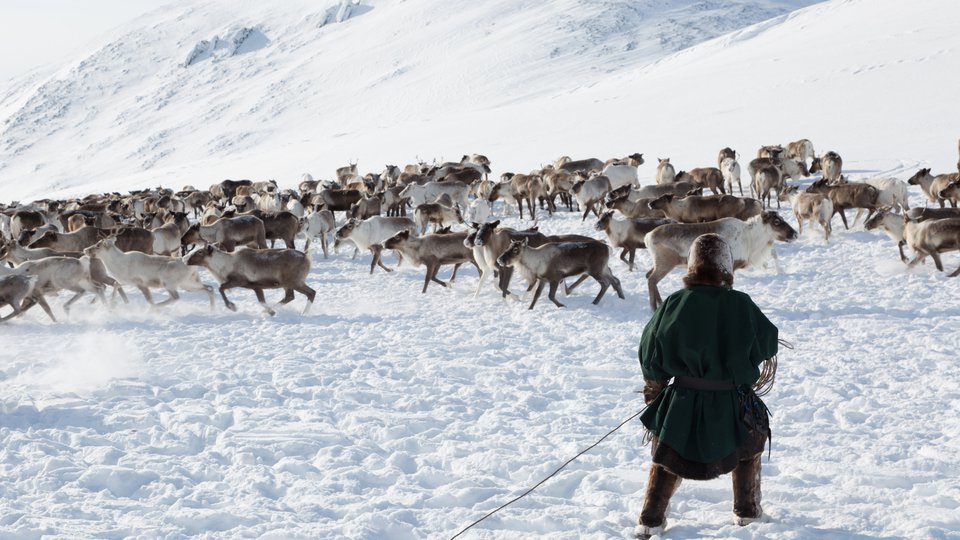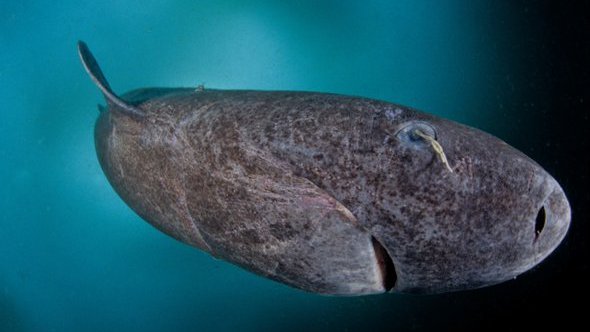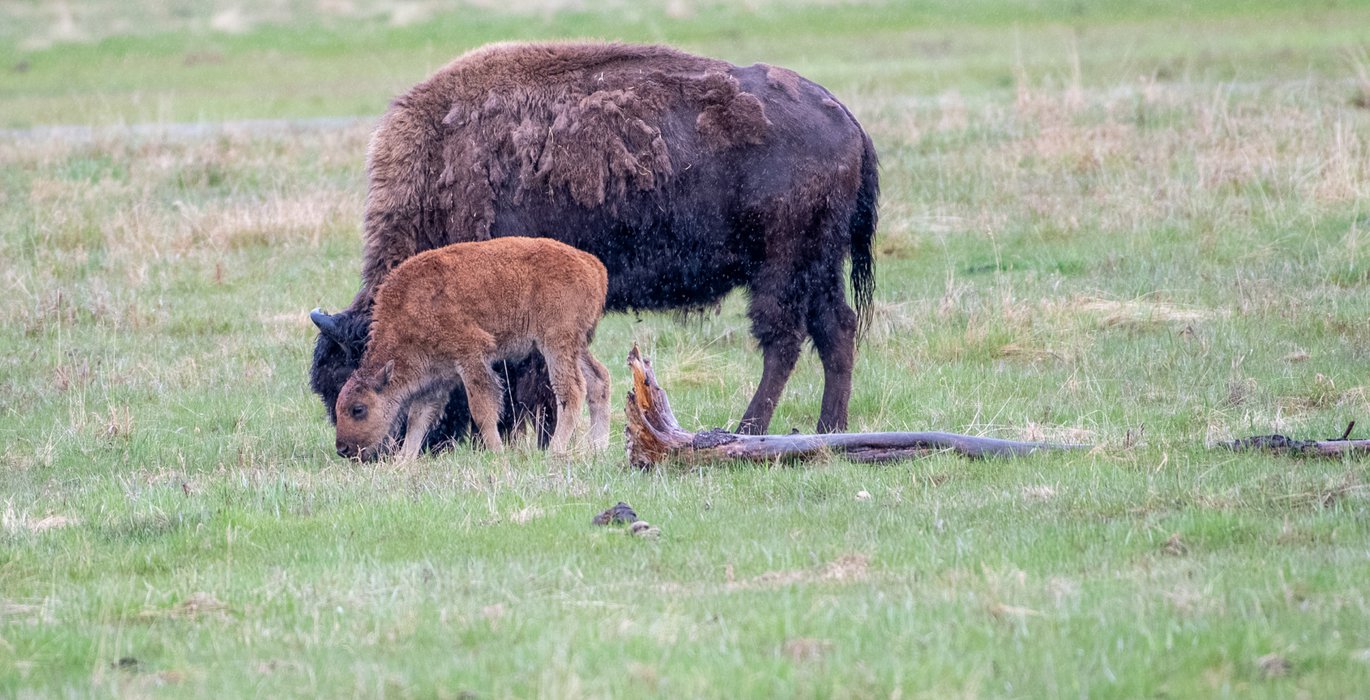
The baby bison—knobbly-legged, heavy-headed, the colour of burnished brass—turn sharply, following the wide parabola of the rushing herd. They crash into the creek, sending a spray of muddy brown water up into the air.
“See,” says Yukon Wildlife Preserve (YWP) veterinarian Maria Hallock, gazing fondly at the frolocking animals, “look at that. They’re already keeping up with the herd.”
“There’s so many calves that predators can’t eat them all—that’s their strategy, instead of hiding (like moose and elk)...Some calves get (eaten by) predators, for sure, but the idea is to put a cap on that.”
Tom Jung, biologist
The two calves were born at the Yukon Wildlife Preserve, 30 KM north of Whitehorse, in their 39 acre enclosure—quite possibly the largest in a zoo-style setting in North America, Hallock notes. The first arrived on April 22, the second shortly after; there would have been a third, but one calf was stillborn. There might yet be other calves for these two to play with on the way though, as it’s “hard to tell” when a bison cow is pregnant, Hallock says, due to their naturally rotund physique and the massive animals reticence to be approached, let alone handled, by humans.
By May 18, the pair already weighed 70 to 80 lbs (32 to 36 kg), about 20lbs (9.1 kg) heavier than when they were born less than a month ago, meaning they’ve gained around three-quarters of a pound (one-third of a kilogram) everyday since birth. By contrast, human infants gain around 1 ounce (30 grams) a day in their first month of life. These big-eared cuties still have a lot of growing ahead of them, though; the bull wood bison (bison bison athabascae) found in Northern British Columbia, Yukon and the Northwest Territories can weigh as much as 2,500 lbs (950 kilograms) and stand 1.8 meters tall—about the same height as a standard pickup truck.
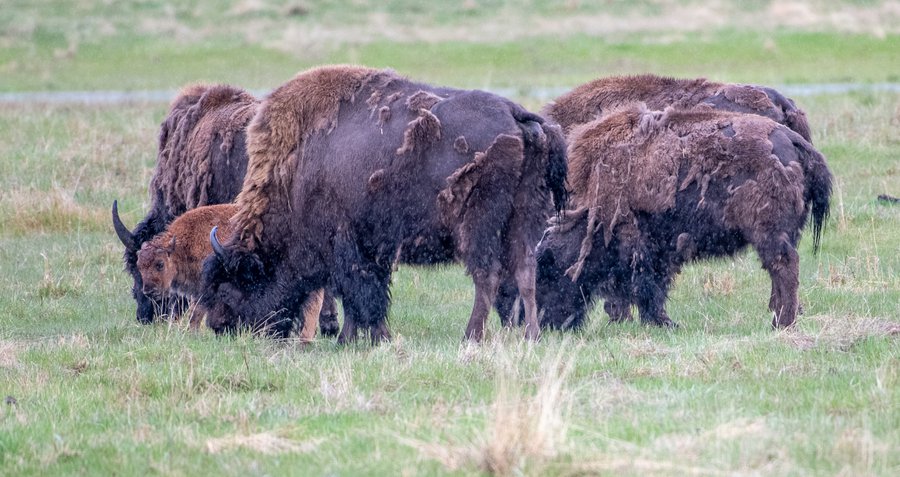
Bison calves and mothers will remain in close proximity to each other for a year or two after birth. (Photo: www.archbould.com)
Getting that large, however, is no easy task, and comes with a lot of help from mom and the rest of the herd, says Yukon Environment biologist Tom Jung.
Bison have a complex “society” says Jung, in which “classes” are formed around age and sex. In the winter, when there is less food(making large groups less sustainable), herds break into small subgroups, but in the springtime they come together again—which is particularly important to pregnant cows, who employ a safety-in-numbers approach to calving. Similar to barren ground caribou, bison all calve at around the same time, a tactic which “overwhelms” predators like wolves and bears, and ensures a higher rate of survival; a large herd means more “eyes and hooves” to combat would-be hunters looking for a baby bison snack.
“There’s so many calves that predators can’t eat them all—that’s their strategy, instead of hiding (like moose and elk),” says Jung. “Some calves get (eaten by) predators, for sure, but the idea is to put a cap on that.”
The typical calving season for bison in Yukon is mid-May, which coincides with the “green wave” of the aspen coming into leaf. Calves are “born ready to run” and a good, healthy calf requires “a lot of investment from mom” during gestation. Calves and mothers will remain in close proximity to each other for the next year or two after birth.
“There’s a hugely strong bond between mother and calf—they’re very close,” says Jung. “I don’t want to anthropomorphize them, but they are.”
Although they only really “need” milk for the first six to eight months, Hollocks notes they’ll often suckle for as long as their mothers allow them, sometimes trying to even sneak a drink from another cow as they get older.
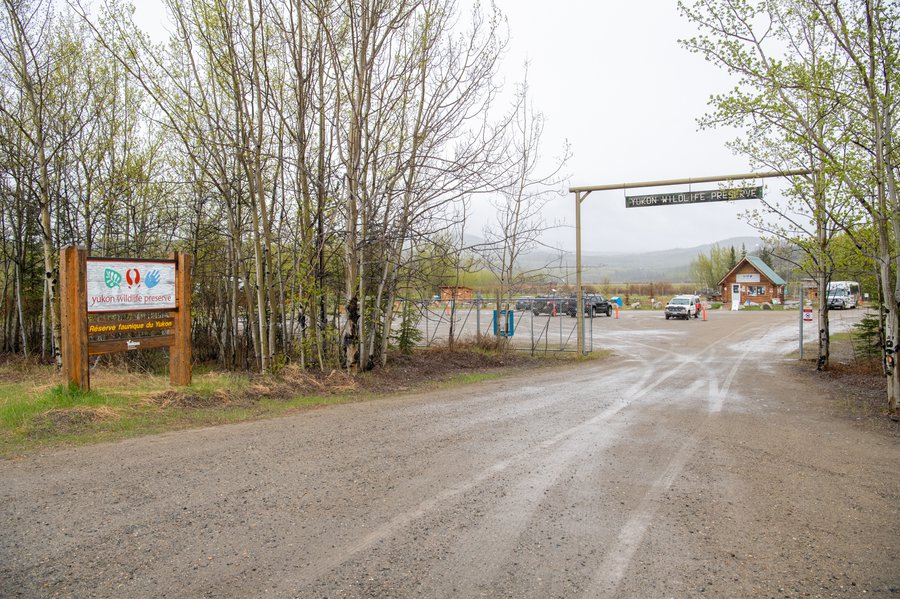
The 39 acre enclosure at the Yukon Wildlife Preserve is located 30 KM north of Whitehorse. (Photo: www.archbould.com)
If calves can get through the first 30 to 40 days—the period when calves are most vulnerable to predation and injury—there’s a pretty good chance they’ll survive to adulthood. Calves spend a lot of time playing in the summer, Jung says, during which they live “a really charmed life,” but all that changes once winter hits. Winter in Yukon can begin in October and last until April, with calves being exposed to -30C weather at only five or six months old.
Although most calves are born in May, there are often a few stragglers born in mid or even late summer; these animals are smaller and weaker than their older counterparts going into the long winter, and have “a really hard time of it,” even if they manage to survive.
Naturally, the calves at the wildlife preserve don’t have to worry as much about predators, living in a fenced enclosure, and, although in summer they primarily eat (and strongly prefer) natural forage, the herd eats two bails—2,600 lbs (1,180 kg)—of hay a week in the winter. Despite being under near-constant observation, staff at YWP try to allow things to happen as naturally as possible in the enclosure, only interfering when something goes wrong, in part because it allows the animals to remain as wild as possible, and in part because handling a 950 kg bison is a huge, sometimes dangerous, task. Giving an animal medical attention, for example, requires multiple staff members to drive out in trucks to distract and corral the rest of the herd, while the animal in need has to be isolated and tranquilized with a dart, which requires handlers to get within 20 feet (6 meters) of their target.
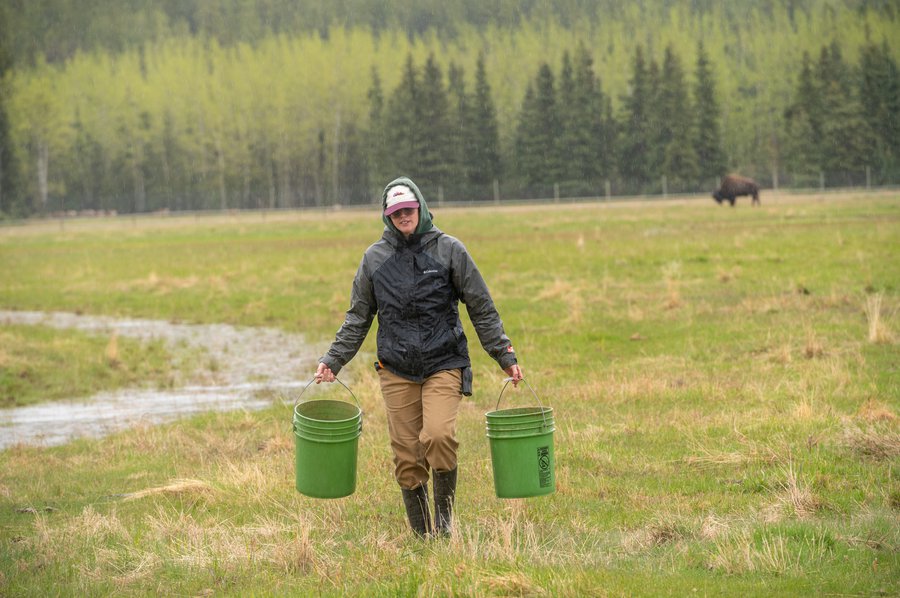
The bull wood bison (bison bison athabascae) found in Northern British Columbia, Yukon and the Northwest Territories can weigh as much as 2,500 lbs. (Photo: www.archbould.com)
Despite their gentle, bovine-like appearance, bison are incredibly tough and should not be taken lightly in any situation, wild or otherwise. In September 2020, a Yukon hunter was fatally gored by a bison—one he had already shot, and believed dead. It is the only recorded instance of a bison killing a person in the territory.
With the addition of the two new little ones, the YWP herd stands at 16 members (two bulls, 12 cows and two calves). As bison can live up to 20 years, YWP staff carefully manage the size of the herd to ensure they don’t outgrow their habitat, which, in the absence of predation, means selectively culling animals, particularly young males, who are prone to fighting with each, says YWP executive director Jake Paleczny. The culled animals aren’t wasted, but rather fed to the preserve’s meat-eating residents, such as lynx and foxes, or to the raptors in their rehabilitation program.
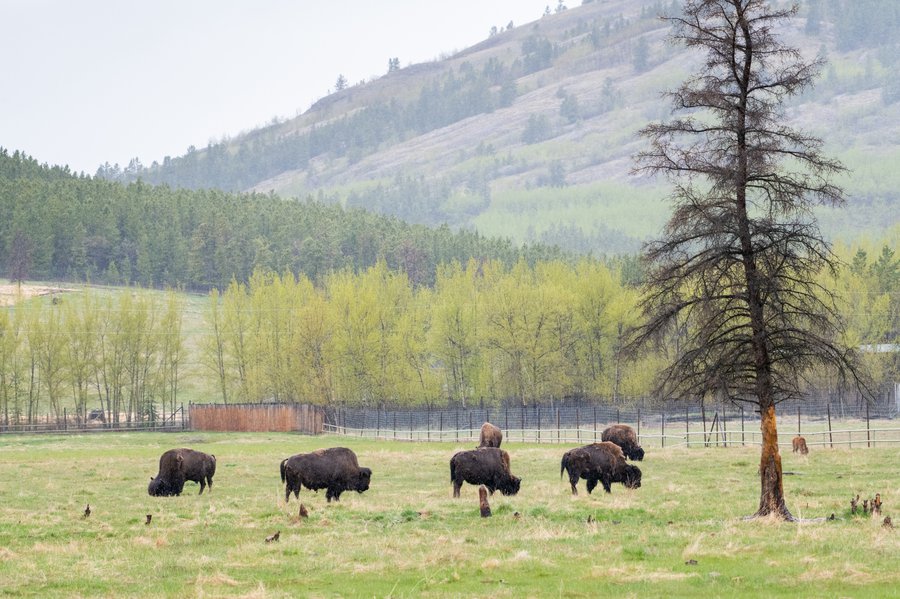
The typical calving season for bison in Yukon is mid-May. (Photo: www.archbould.com)
All the bison at the YWP are descended from one bull and three cows imported from Elk Island National Park. Similarly, all bison in Yukon are descended from imported animals as part of a federal conservation and reintroduction program begun in the 1980s.
Although bison in the BC-Yukon corridor were still present during the Yukon up until the 1930s, bison had been extirpated from their current range in south-western Yukon for nearly 350 years when they were placed in the area—a campaign undertaken without any consultation with Champagne-Aishihik First Nation, on whose land the animals now roam. The issue continues to cause tension between settler and First Nation governments in the territory, with First Nations citing concern around their impact on wildlife and the landscape of their nation.
